In 2017, Charley Henley explained the visual effects work on Alien: Covenant. He went on to work on Artemis Fowl, House of Gucci and Disenchanted. Today, he tells us about his new collaboration with Ridley Scott on Napoleon.
What was your feeling about this new movie with Director Ridley Scott?
It was joyous to work with Ridley Scott again. From studying his beautiful storyboards to sitting with him as he grades the film in DI, the journey is always inspiring. You want to go big? He makes you go one bigger.
What was his approach and expectations about the visual effects?
His approach on this one – Stage all the svihoot for real, and when that’s impossible because we cant build 50 tall ships in time or wait for 40’000 soldiers to prepare and be on set at 9am, you guys get to work.
His expectation – Make the work look real, and like a painting!
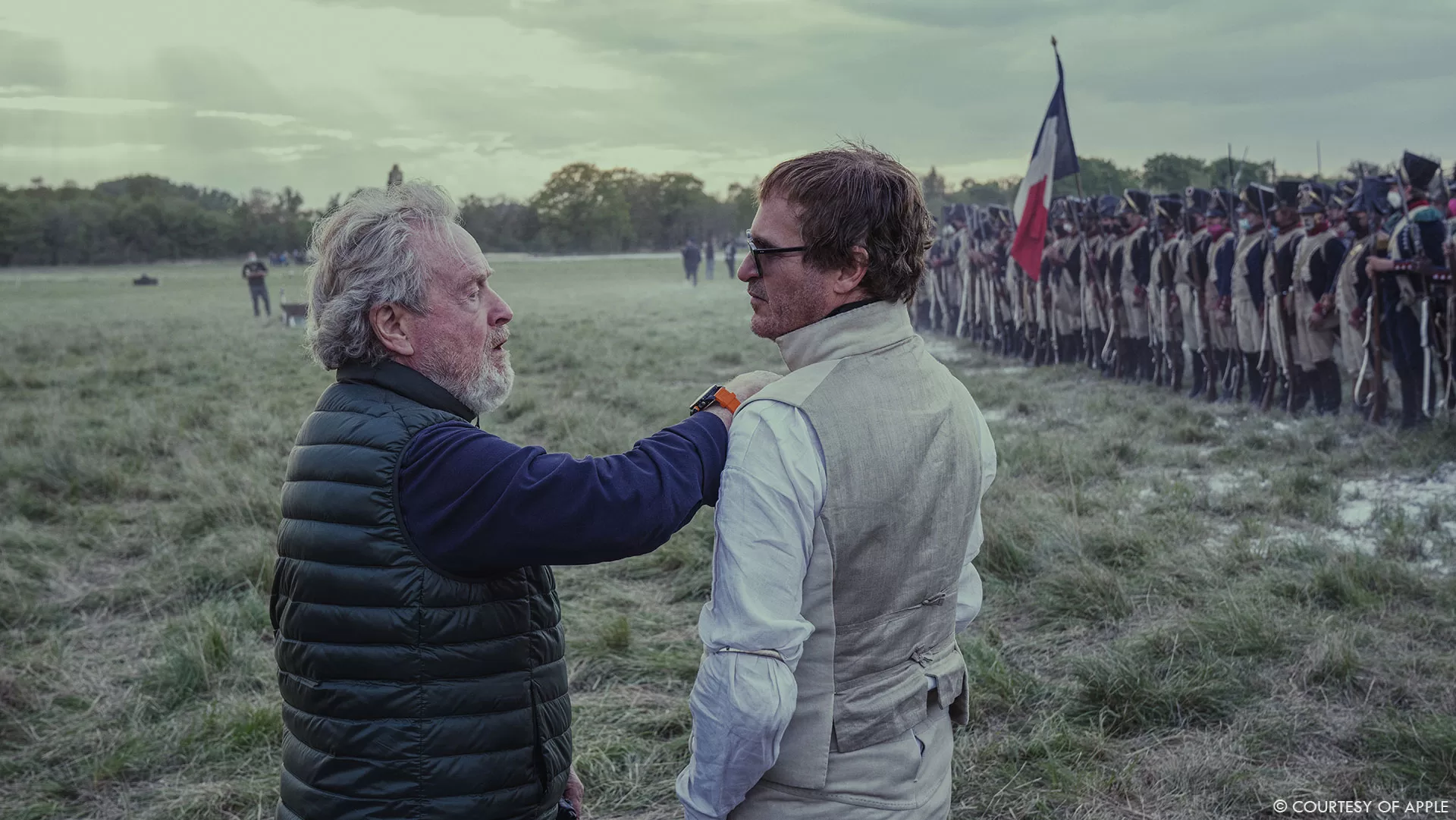
How did you organize the work your VFX Producer?
Sarah Tulloch brought an incredible team to the game including Lydia Bland to managing our massively complex production and Richard Bain to cover me on set. This team meant I could focus on steering us all toward Ridleys vision and give time to planning ahead and making sure everyone had good purpose. Sarah and I worked to run a happy ship, dividing the work amongst 8 vendors and a substantial in-house team. We stratagised how best to service the shoot and the edit process to create a smooth and efficient operation, it was a tough show though, the shoot was always on the road and it was like the whole production was on a war footing to get this done.
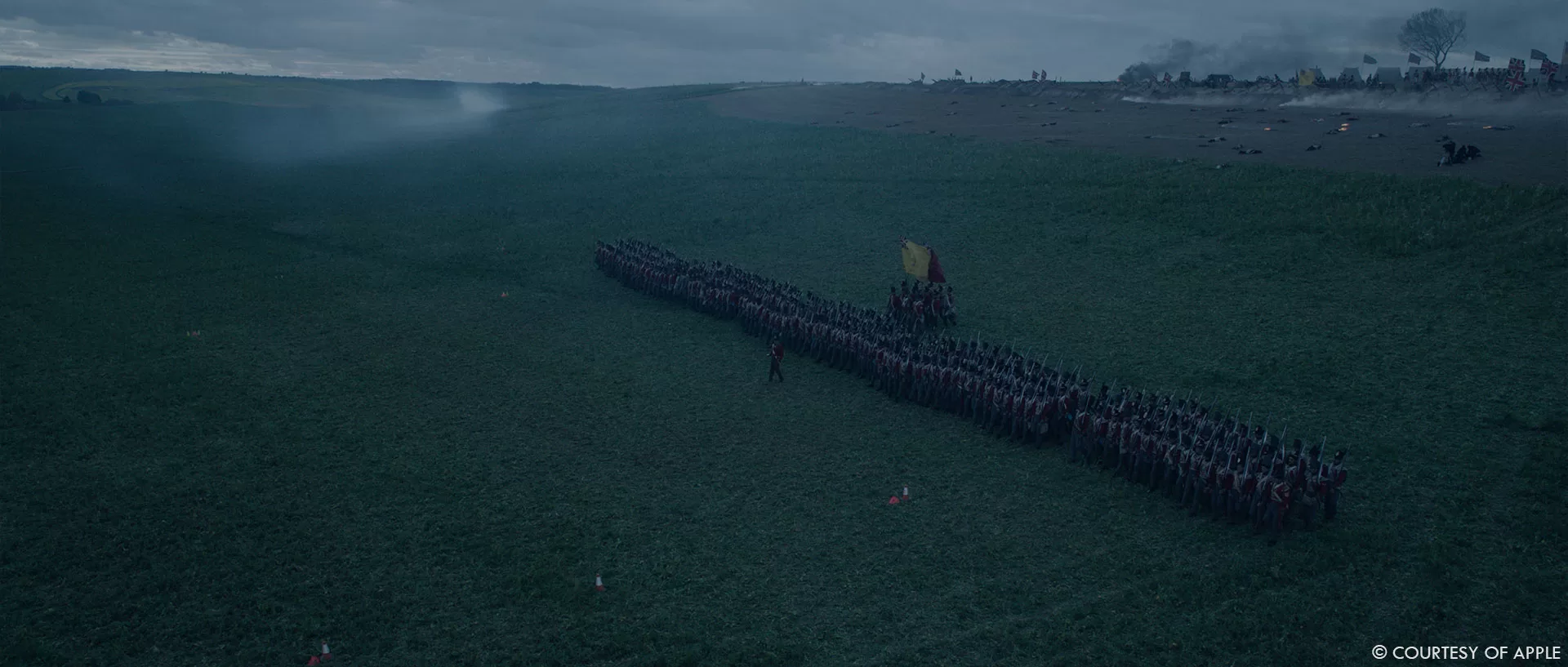
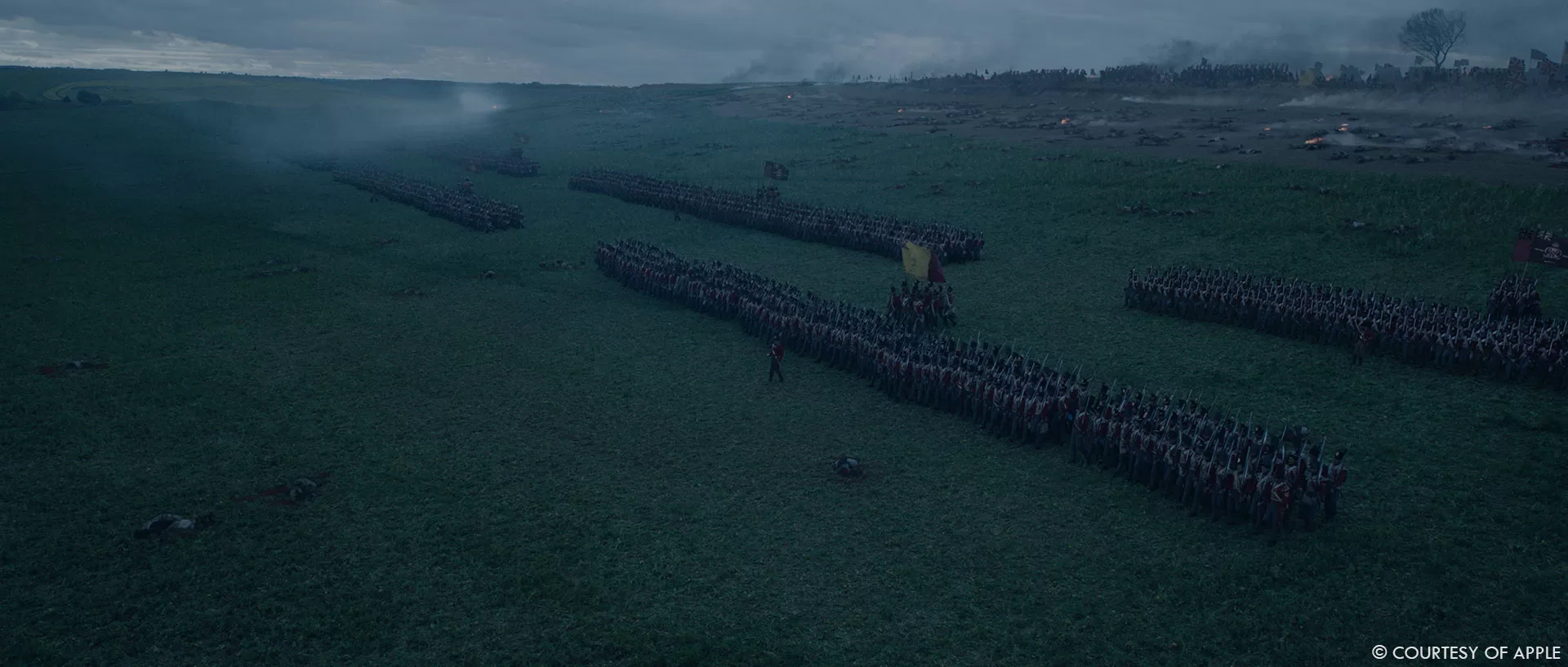
How did you choose and split the work amongst the vendors?
It started with the battles 3 big battles that we knew needed to be run in parallel to give as much attention to each as possible. So they went to MPC, ILM and BlueBolt. The rest was in chunks of separate scenes or specific challenges again so we could have great supervisors in each facility focus on particular problems. For example Outpost VFX had all of Egypt, Light VFX picked up the smaller but very particular Battle of Borodino, One of Us took care of the Guillotine scene and PFX focused on interiors replacing 1200 candle flames and 18 fire places. We also had a strong in-house team lead by supervisor Dave Bowman and supported by a talented team of artists at Cheap Shot they took on a wide rang of the one off shots including matt paintings, adding dogs, birds and bird shit!
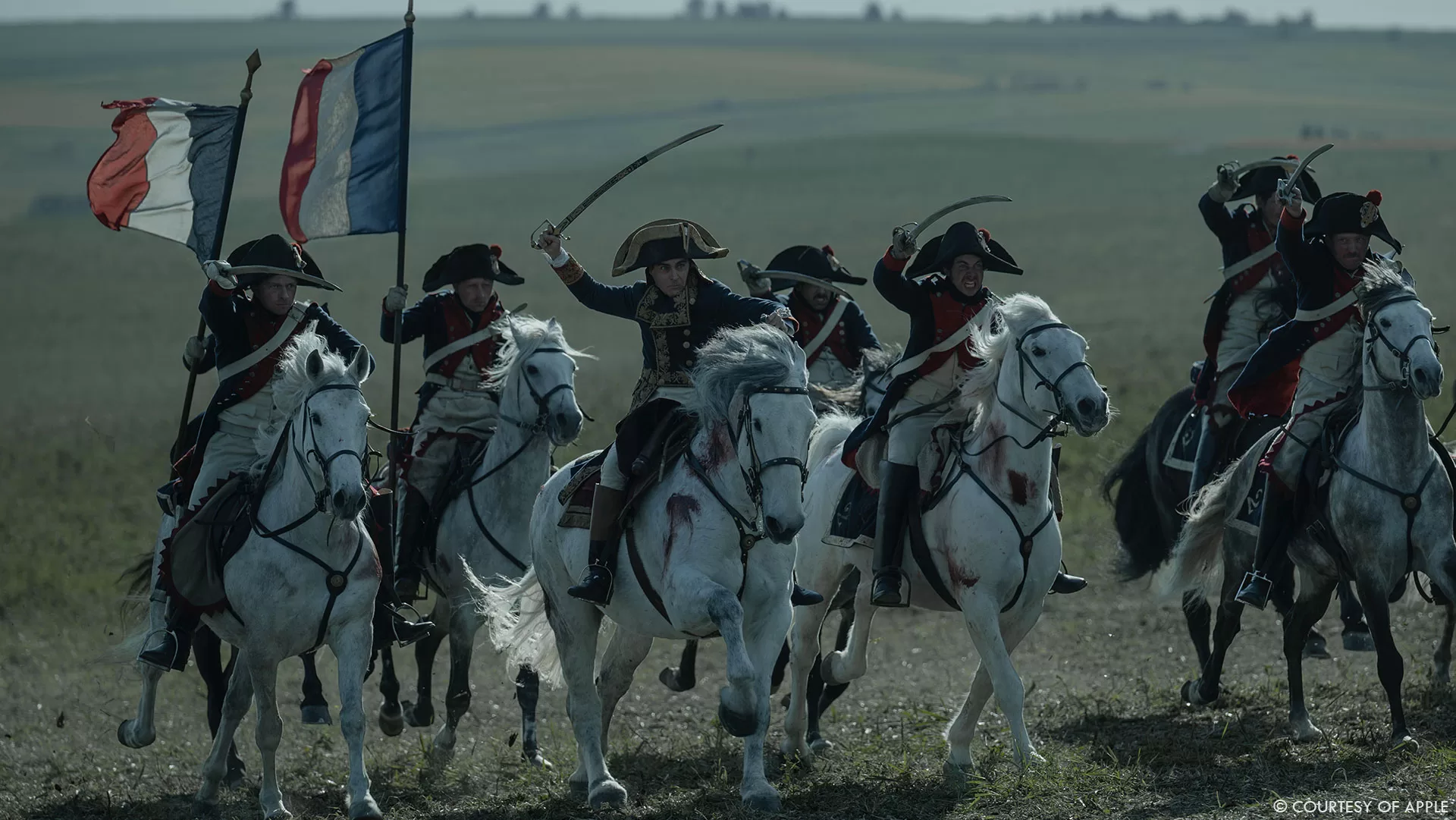
Where were the various sequences of the movie filmed?
England stood in for France and Austria and Russia and Malta for Toulon, some of Paris and Egypt. Blenheim Palace was used for multiple scenes although if you go there you’ll be hard pushed to recognise it. Waterloo was at a farm called Churn in Buckinghamshire, Toulon at the real fort of Riccasoli in Malta. A polo pitch and a quary in Malta was used for the Egypt scenes.
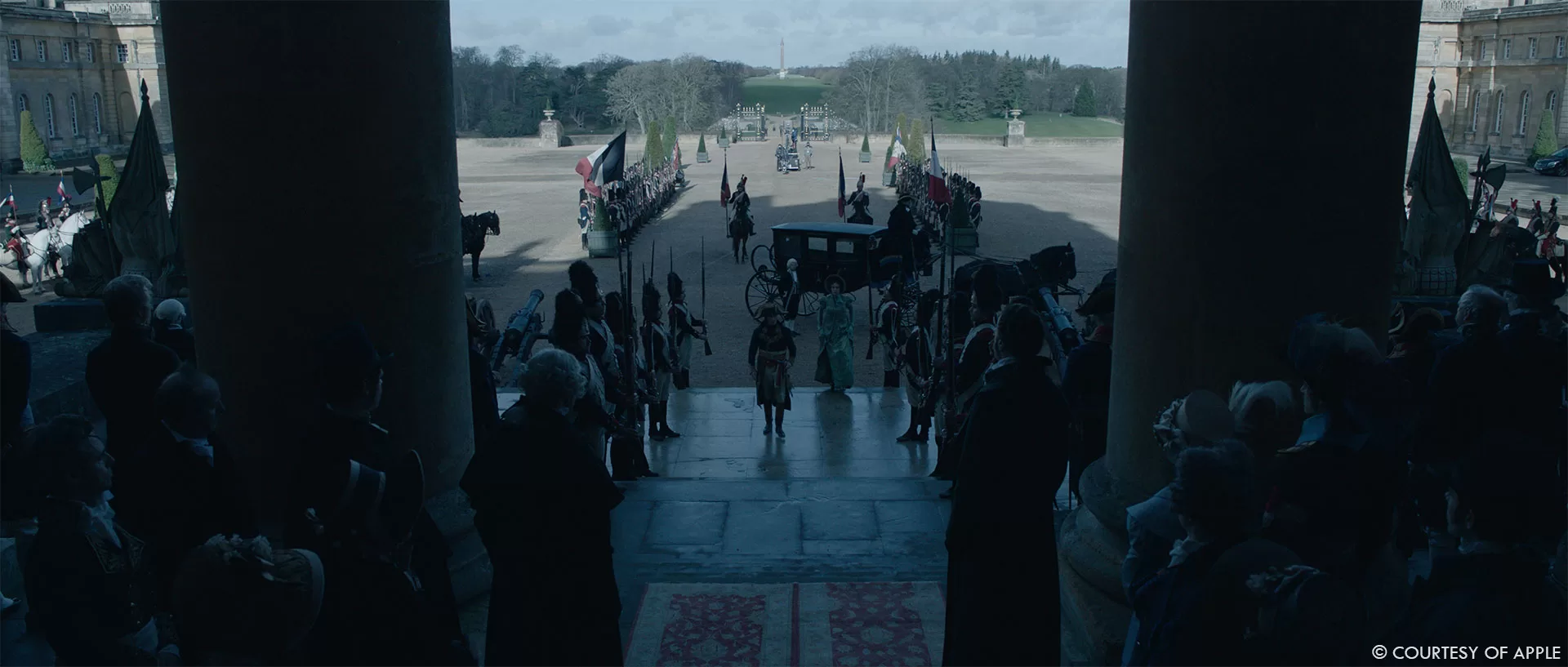
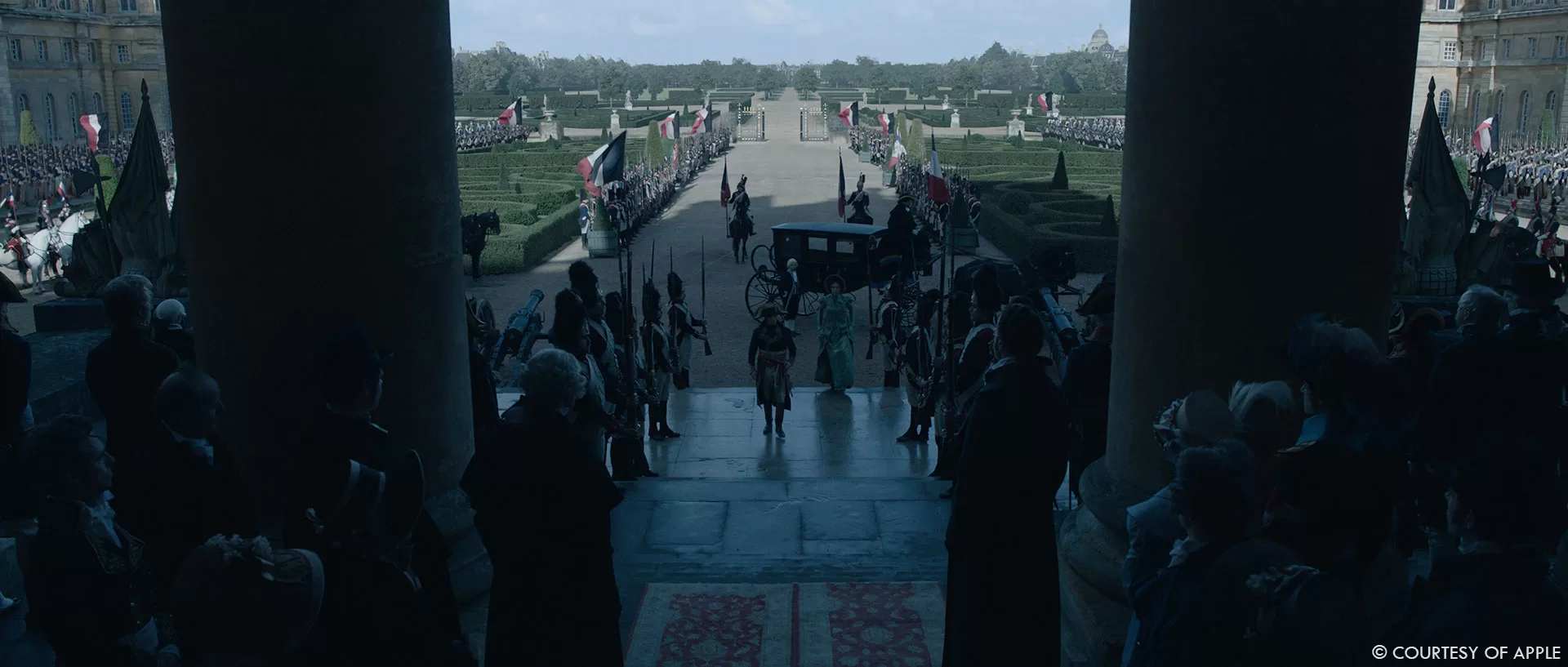
Can you elaborates about the set extension work especially for Paris and Moscow?
With Ridley’s preference to shoot real Buildings over bluescreens, sequences were shot in the UK and Malta, and then augmented to create the illusion of being in France, Russia and Egypt.
The approach involved always filming on location, and then digitally face-lifting the buildings to better match the historical sites. We hired the architect Inigo Minns to guide us on how to augment the architectural styles, to convincingly appear like the historical locations whilst keeping as much of the original building as possible.
What kind of references did you received for the environments work?
Arthur Max and his wonderful Art department headed by Denis Schnegg supported us with an incredible section of period reference paintings and photography of all the relevant builds and locations. Petra Balogh was appointed VFX Art Director and she helped integrate the Art Departments work and VFX. In the Napoleonic era photography wasn’t invented, but luckily for us 18th century paintings, sometimes commissioned by Napoleon himself are of beautify detail and quality and a vast collection of paintings became our reference bible.
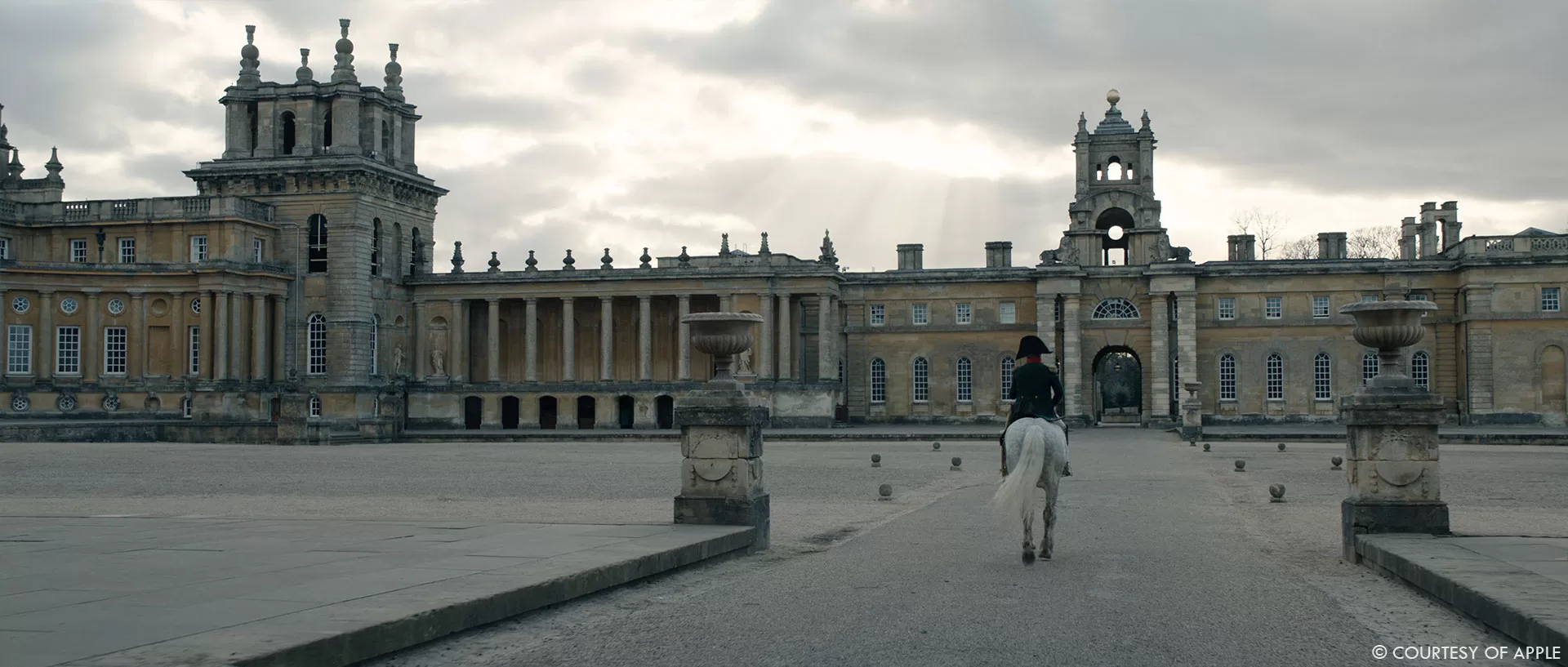
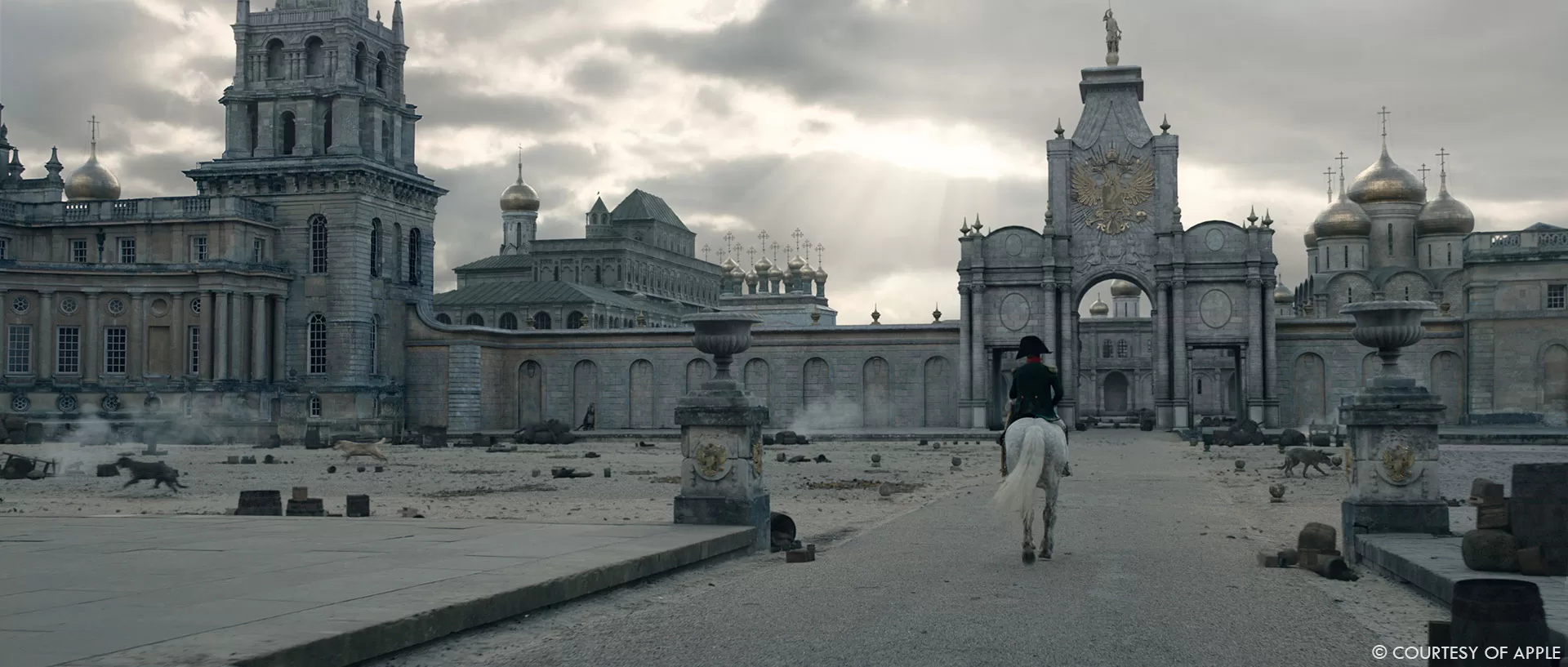
Which location was the most complicate to recreate?
Austerlitz, as it was impossible to shoot in real snow and impossible to shoot on a real ice lake , and we needed a large flat area for the lake and a forest and mountains. So we ended up shooting each location separately. Or in-house Visualisation supervisor Dan Rickard created and Ipad app that gave us real-time reference for every camera on what the missing part of the location was going to look like and therefor how best to frame. This way we could be in the wood and correctly frame on the village below and the lake and via versa.
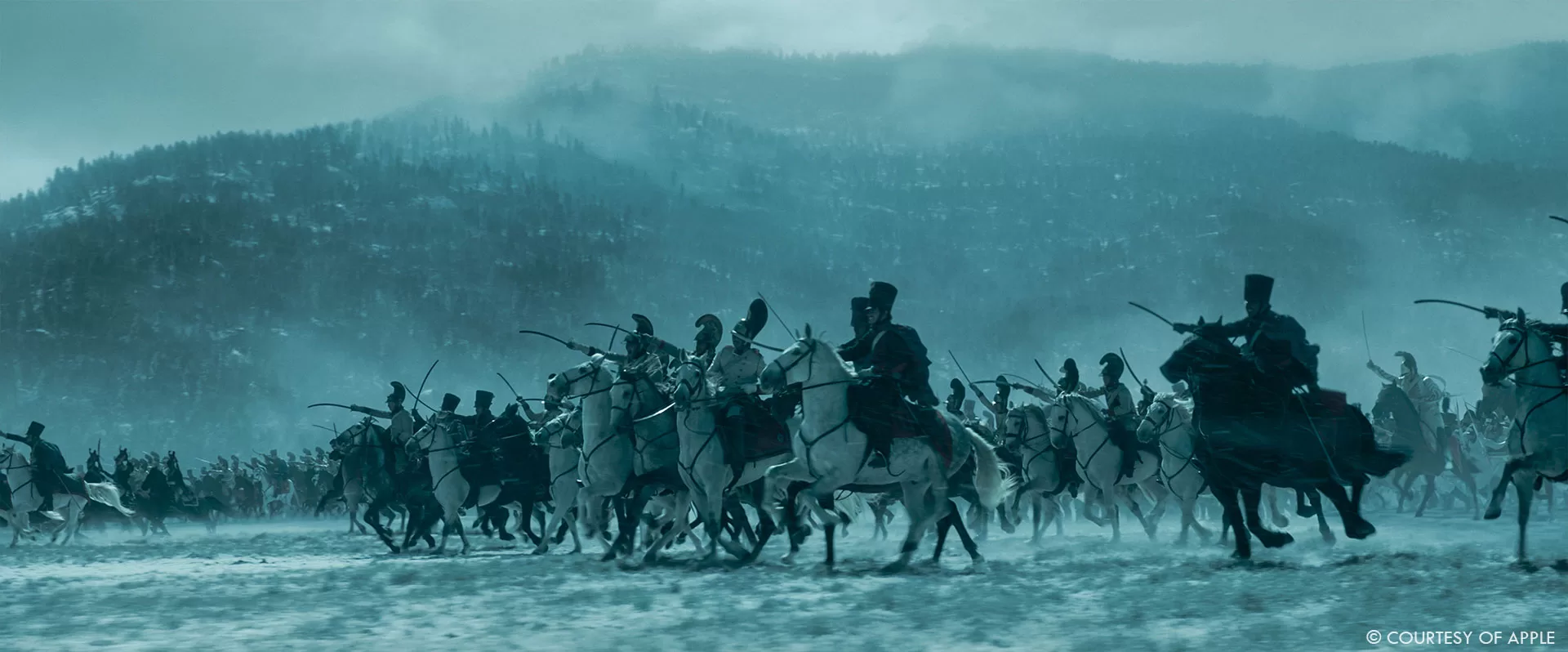
Can you tell us more about your work on the underwater shots?
Neil had built a tank on the airfield set for the lake, that worked for falling into the water and ice explosions, but as the water got dirty and it was cold, all the underwater shots were done in a tank at Pinewood studios. We teamed up with Luke Scott and the ILM team to shoot those underwater scenes mostly is sections as the tank wasn’t huge, Special effect supervisor Keith Dawson covered this shoot and we had cannon balls rigged on wires to shoot into the ice made form wax. We just removed the wire and added some shock wave effects and it looked great. ILM added CG simulated blood under water as Ridley wanted to direct this in the edit.
The Waterloo has really impressive wide battle shots with tons of elements. How did you manage these kind of challenging shots?
The plan was always to shoot real plates and have some real elements of everything to match to. Neil Corbould’s SFX team designed and constructed 14 practical cannons that could fire both pyrotechnics or a safe talcum powder version if there where actors in front of them, MPC’s team added Muzzle flashes and cannon balls. We had about 20 real tents, and 500 army and 100 horses all of which where scanned by Visualskies mobile cyber scanning rig, built as CG assists to tremendous detail, and matched and animated to fill the space. We had cut out dummies placed all over the battle fields so we could check human scale and colours at any spot on the battle field that turned up in shot.
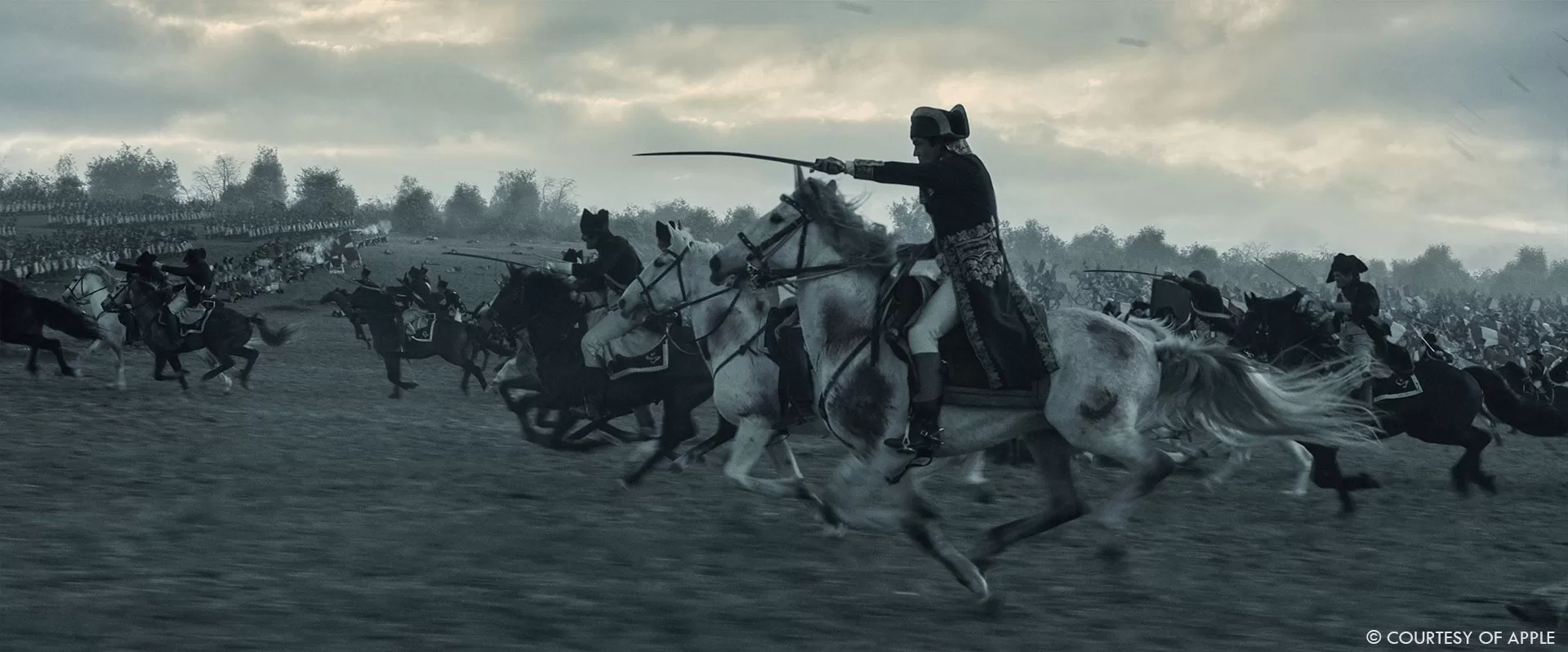
How did you enhanced the gore aspect of the battles such as the poor horse in Toulon?
There was a layer of gore across the film. There was a huge amount of practical special effects but as we needed to do so many retakes and the action and battle scenes where so continuous and on such a a scale with 14 cameras, it wasn’t practical to have too much on set blood and gore. Most of it was very hands on frame by frame tracking elements on to people, especially in the scene Henry Badgett’s team did with BlueBolt, where Napoleon fires cannon grape shot into the rebellious crowd in Paris. Other shots needed animated CG heads rolling, and limbs flying. The poor horse in Toulon was a special case based on a motion rig Neil built, each shot had its dummy legless horse and real stunt rider. Luc’s team at MPC then combined the real with a CG version of the horse carefully animated legs all based off of video reference and a mix or practical and CG gore.
Did you do digital makeup work for the disease or the cold?
All the makeup was practical, we augmented some dead bodies and added a lot of breath to enhance the feeling of the cold. One Of Us did do face replacement work on Marie Antoinette’s beheaded head though.
Which sequence or shot was the most challenging?
In the Battle of Waterloo and Austerlitz scenes, getting the CG crowd to match the military movements and in particular the various horse gaits was tough, the CG had to match perfectly and stand up next to so many different live action performances, we had to try many paths to perfect them.
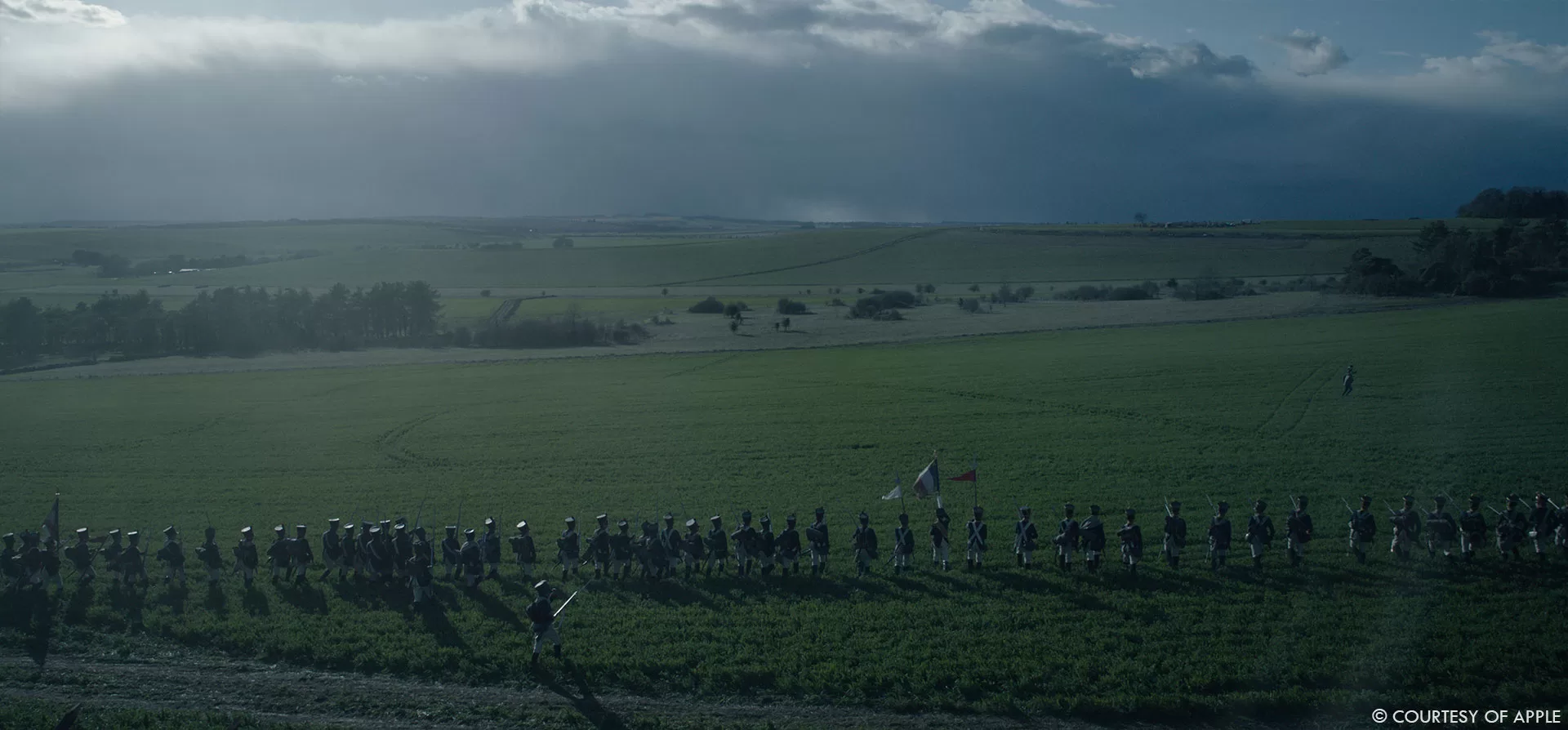
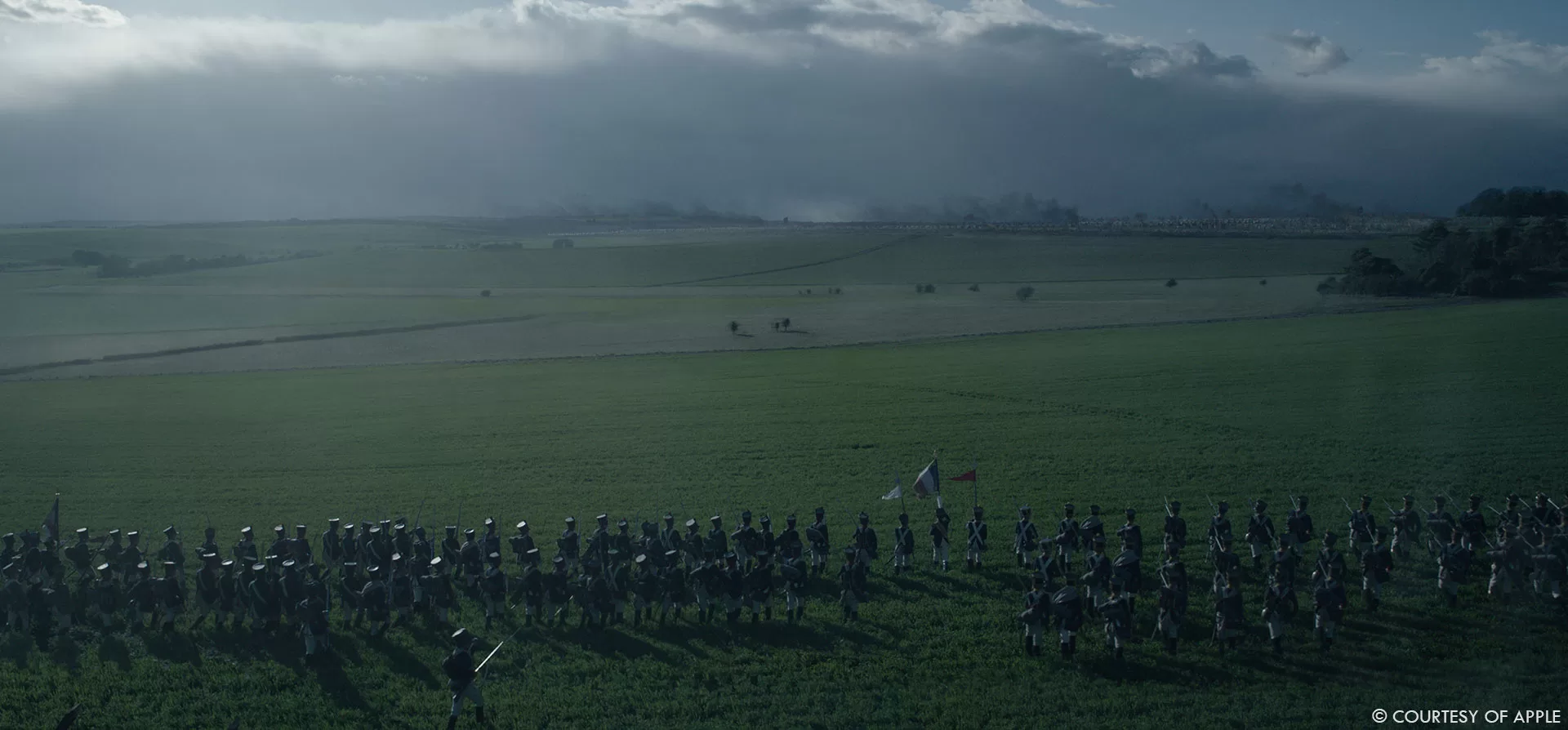
Is there something specific that gives you some really short nights?
The Battle of Austerlitz took a long time in preproduction to figure out how we were going to do it, where we were going to film it and how much VFX would be needed. We ended up shooting in 3 locations and stitching them together, it was complicated in post but by then we had a good plan.
What is your favorite shot or sequence?
I like the Conquest of Egypt shots and the fact they were based on Ridleys own drawings and an 18th Century Painting.
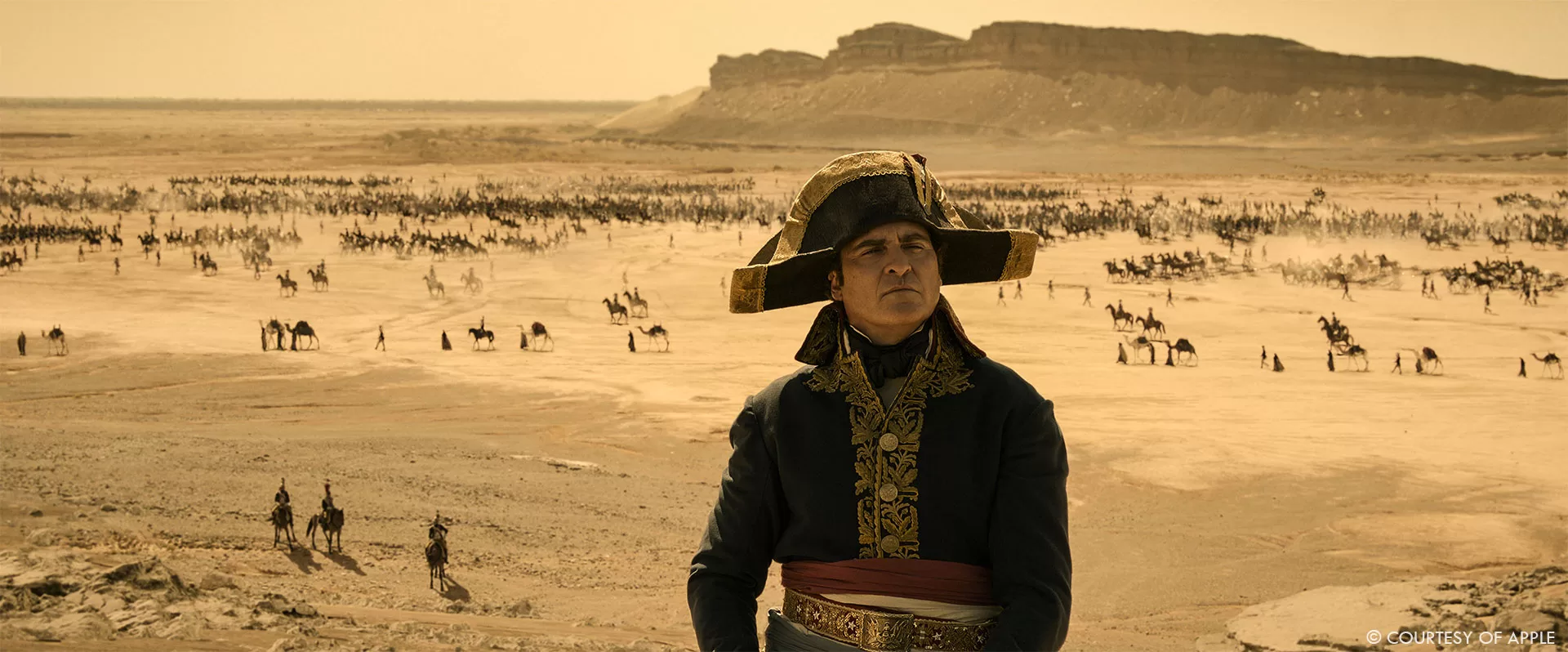
What is your best memory on this show?
Best and Worst – Reading there were no VFX on Napoleon. I thought we must have done something right.
How long have you worked on this show?
Just under 2 years, I started very early days in preproduction lots of prep but the shoot was only 60 days and post was 30 weeks.
What’s the VFX shots count?
1046.
What is your next project?
I’m dreaming of doing a Western.
A big thanks for your time.
WANT TO KNOW MORE?
MPC: Dedicated page about Napoleon on MPC website.
BlueBolt: Dedicated page about Napoleon on BlueBolt website.
ILM: Dedicated page about Napoleon on ILM website.
Light VFX: Dedicated page about Napoleon on Light VFX website.
One of Us: Dedicated page about Napoleon on One of Us website.
Outpost VFX: Dedicated page about Napoleon on Outpost VFX website.
PFX: Dedicated page about Napoleon on PFX website.
Visualskies: Dedicated page about Napoleon on Visualskies website.
© Vincent Frei – The Art of VFX – 2023




